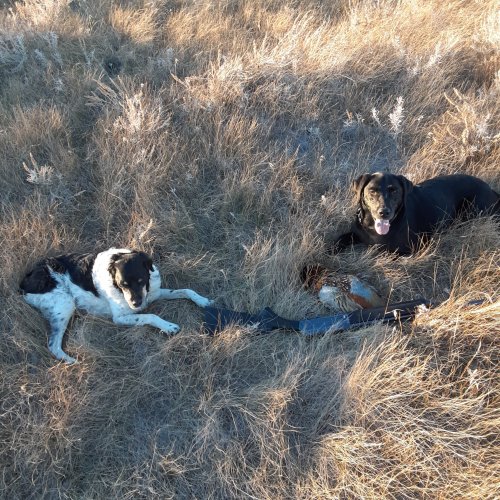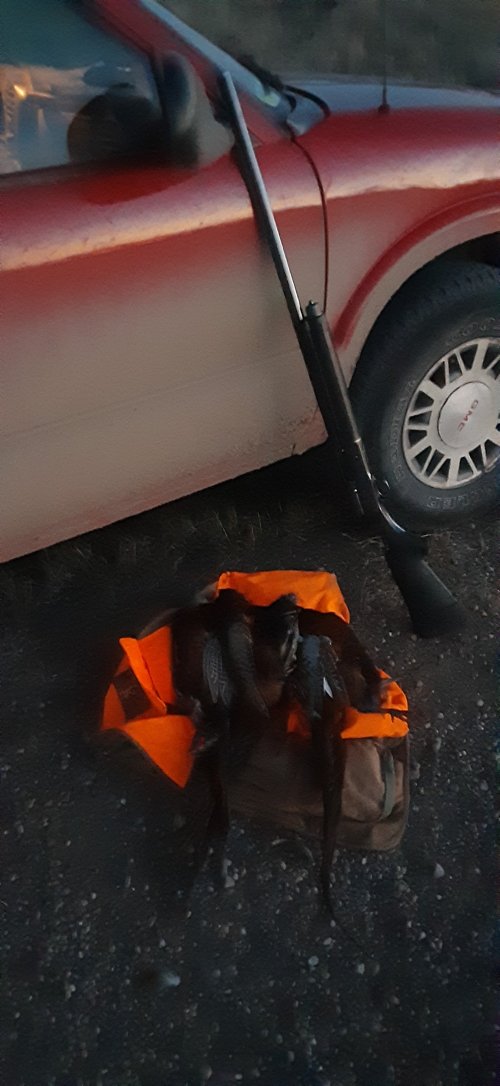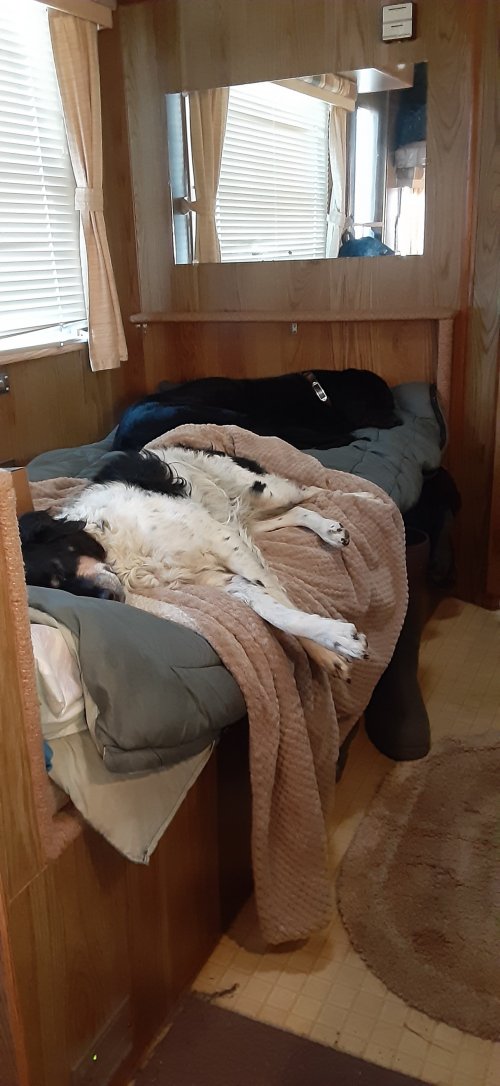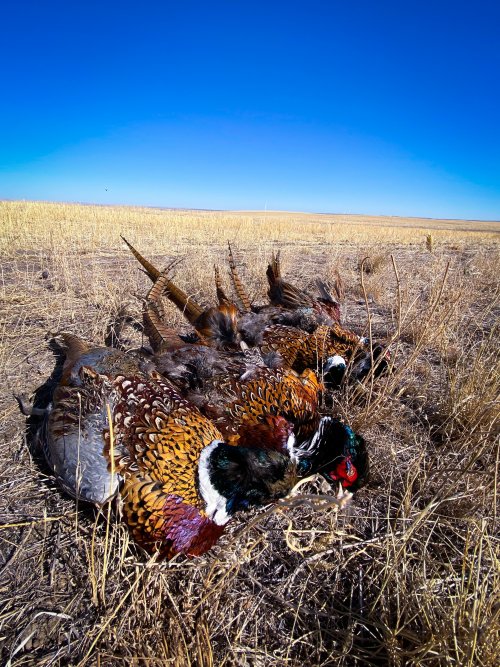OntarioHunter
Well-known member
- Joined
- Sep 11, 2020
- Messages
- 5,997
First limit of the year. Hunted my arse off all day only to shoot three in the last hour of daylight. Knocked a rooster down early in the morning but he got up again and flew away before Ellie could grab him.

Edit: We're not going anywhere today. The dogs are beat. Too sore to get up and eat. And this is a Lab I'm talking about!


Edit: We're not going anywhere today. The dogs are beat. Too sore to get up and eat. And this is a Lab I'm talking about!

Last edited:





